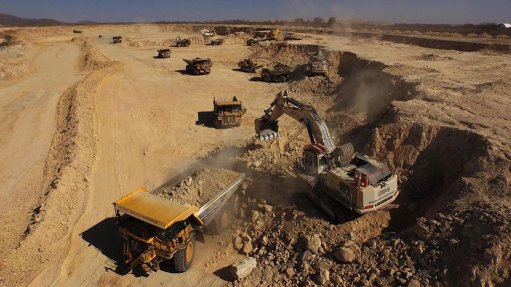
TSCHUDI MINE, NAMIBIA The mine’s openpits have progressed deeper with the proportion of mixed oxide and sulphide ore mined having increased as expected
Copper mining company Weatherly International (WTI) CEO Craig Thomas has provided an update for copper cathode production in the March quarter for the company’s Tschudi openpit copper mine, in Namibia.
He says that, as the mine’s openpits have progressed deeper, the proportion of mixed oxide and sulphide ore has increased as expected. Thomas elaborates that this mixed ore is expected to leach more slowly than pure oxide ore and the mining and stacking schedules have been designed to accommodate this.
He comments that slower than expected recoveries from ore stacked in late 2016 resulted in a need to accelerate stacking rates to compensate, but says that, unfortunately, this coincided with above-average rainfall, which caused operational delays that were typically two to three times longer than those experienced in previous rainy seasons.
Therefore, Tschudi was unable to further accelerate stacking rates to compensate, and instead of producing at above-nameplate rates to recover more of the shortfall from the September 2016 quarter as scheduled, production rates fell to 24% below nameplate, at 3 236 t, with the greatest impact felt in March.
“As rain delays reduced through March, the rate of stacking contained copper metal improved notably and these improved rates of stacking copper are expected to be sustained going forward. The rate of leaching is expected to recover during the June quarter and full-year production to June 2017 is now forecast to be between 14 500 t and 15 000 t.”
Thomas remarks that, as an additional response to the slower leaching of mixed ore, a greater pad area is required to maximise the recovery of copper prior to overstacking
.